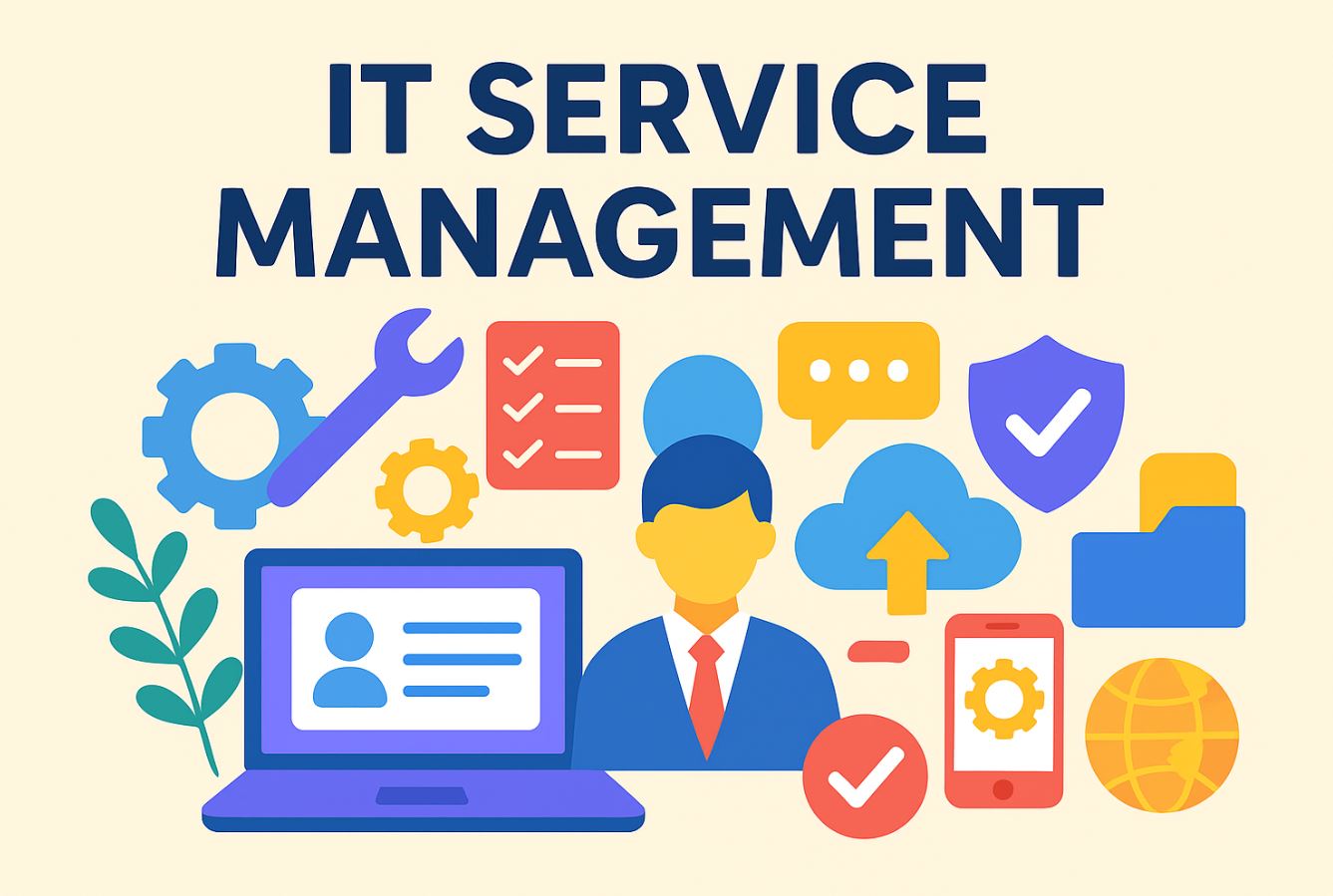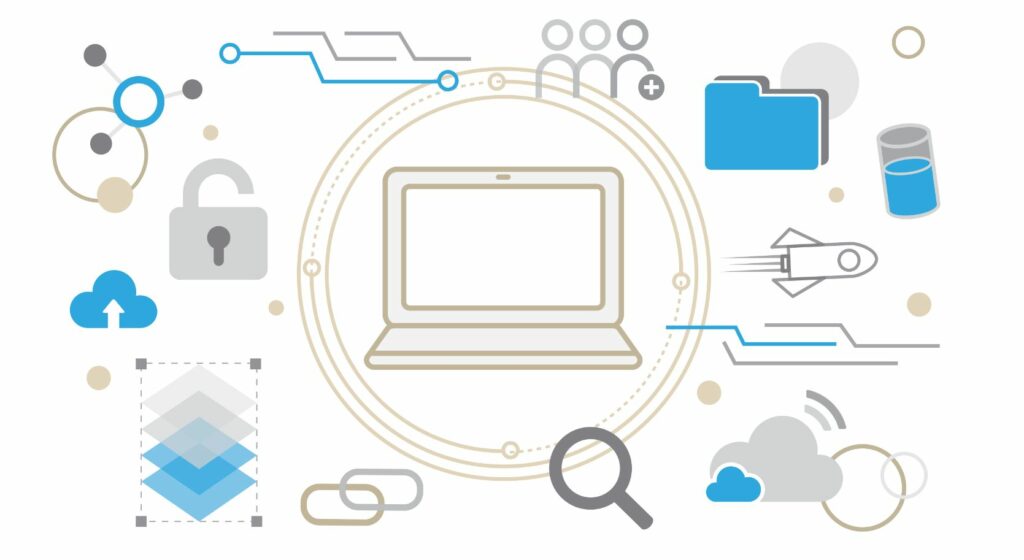What is IT Service Management (ITSM)?

In today’s fast-paced, technology-driven world, businesses rely heavily on IT systems to deliver seamless services, streamline operations, and meet customer expectations. IT Service Management (ITSM) has emerged as a critical discipline to ensure that IT services align with organizational goals, enhance efficiency, and drive customer satisfaction. As organizations increasingly adopt digital transformation, ITSM has become a cornerstone for managing IT infrastructure and services effectively. This comprehensive guide explores the essence of ITSM, its frameworks, processes, tools, and real-world applications, with a focus on leading ITSM solutions like Freshservice, ManageEngine ServiceDesk Plus, and Zendesk for IT Service Management.
Understanding IT Service Management (ITSM)
Definition of ITSM
IT Service Management (ITSM) refers to the set of processes, tools, and practices used to design, deliver, manage, and optimize IT services within an organization. Unlike traditional IT management, which focuses primarily on technology, ITSM emphasizes delivering value to customers and aligning IT services with business objectives. By adopting a service-oriented approach, ITSM ensures that IT operations support the broader goals of the organization, whether it’s improving employee productivity or enhancing customer experiences.
At its core, ITSM is about managing the lifecycle of IT services—from planning and development to delivery and ongoing support. It involves structured processes like incident management, problem management, change management, and asset management, often guided by established frameworks such as ITIL (Information Technology Infrastructure Library).
The Evolution of ITSM
ITSM has evolved significantly over the years. In the past, IT departments focused on maintaining hardware and software, often reacting to issues as they arose. However, as businesses became more dependent on technology, the need for a proactive, strategic approach grew. ITSM shifted from a technology-centric model to a service-oriented one, prioritizing customer satisfaction and business alignment. Today, with advancements in artificial intelligence (AI), automation, and cloud computing, ITSM is more dynamic, enabling organizations to deliver faster, more efficient services. According to recent reports, 81% of businesses now prioritize ITSM as a central component of their digital strategies, reflecting its growing importance in a tech-driven world.
Core Objectives of ITSM
ITSM is designed to achieve several key objectives that drive operational excellence and business success. These include:
- Aligning IT with Business Goals: ITSM ensures that IT services support the organization’s strategic objectives, such as increasing revenue or improving customer satisfaction.
- Optimizing Resources: By streamlining processes and reducing waste, ITSM maximizes the efficiency of IT resources.
- Enhancing Service Quality: ITSM focuses on delivering reliable, high-quality services that minimize disruptions and meet user expectations.
- Promoting Continuous Improvement: ITSM fosters a culture of ongoing evaluation and optimization to adapt to changing business needs.
- Reducing Downtime: Through proactive incident and problem management, ITSM minimizes service interruptions, ensuring business continuity.
By achieving these objectives, ITSM transforms IT departments from reactive support functions into strategic business partners.
ITSM Frameworks: Structuring IT Service Delivery

To implement ITSM effectively, organizations rely on frameworks that provide structured guidelines and best practices. Below, we explore the most widely used ITSM frameworks.
ITIL 4 Framework
The Information Technology Infrastructure Library (ITIL) is the most widely adopted ITSM framework globally. ITIL 4, the latest iteration, emphasizes flexibility and value creation over rigid processes. It includes:
- Service Value System (SVS): A holistic approach that integrates organizational activities to deliver value.
- Four Dimensions Model: Focuses on people, processes, technology, and partners/suppliers.
- Guiding Principles: Seven principles, such as “Focus on value” and “Progress iteratively,” guide decision-making.
- Service Value Chain: Six activities, including planning and delivery, that drive value creation.
ITIL 4 is ideal for organizations seeking a comprehensive, adaptable approach to service management. Its emphasis on collaboration and continuous improvement makes it suitable for businesses of all sizes.
COBIT Framework
Control Objectives for Information and Related Technologies (COBIT) focuses on IT governance and aligning IT operations with business goals. It excels in:
- Ensuring regulatory compliance and audit readiness.
- Managing risks and securing information.
- Creating accountability through control mechanisms.
COBIT is particularly valuable for organizations in highly regulated industries, such as finance or healthcare, where governance and compliance are critical.
ISO/IEC 20000
ISO/IEC 20000 is an international standard for ITSM, providing a systematic approach to delivering managed services. It offers:
- Clear requirements for establishing and maintaining an ITSM system.
- Compatibility with other ISO standards, such as ISO 9001 and ISO 27001.
- A certification path to demonstrate compliance to stakeholders.
This framework is ideal for service providers aiming to showcase adherence to global best practices.
Choosing the Right Framework
Selecting an ITSM framework depends on several factors, including organizational size, industry requirements, and resource availability. For instance, ITIL is suitable for large organizations with complex IT environments, while smaller businesses may prefer a lighter framework like FitSM. Many organizations adopt a hybrid approach, combining elements of multiple frameworks to create a tailored ITSM strategy.
Core ITSM Processes
ITSM encompasses a range of processes that ensure efficient service delivery. Below are the most critical processes, each with specific objectives and best practices.
Incident Management
Incident management focuses on restoring normal service operations as quickly as possible to minimize disruptions. For example, when an employee’s laptop freezes, the ITSM system logs a ticket, categorizes it as a “Hardware Issue,” and assigns it a high priority. The IT team then diagnoses and resolves the issue, often using automated tools to streamline the process. Best practices include:
- Implementing a tiered support structure (L1, L2, L3).
- Using standardized templates for common incidents.
- Maintaining a comprehensive knowledge base for quick resolutions.
Problem Management
Problem management identifies and resolves the root causes of recurring incidents to prevent future disruptions. For instance, if multiple employees report laptop freezes, the IT team might discover a faulty software update and address it proactively. Best practices include:
- Conducting root cause analysis (RCA).
- Documenting solutions to build a knowledge base.
- Collaborating across teams to identify patterns.
Change Management
Change management ensures that modifications to IT services or infrastructure are implemented smoothly without causing disruptions. For example, rolling out a new software update requires careful planning and testing. Best practices include:
- Establishing clear change approval processes.
- Assessing risks before implementing changes.
- Communicating changes to stakeholders.
Asset Management
IT asset management (ITAM) tracks and manages hardware and software assets throughout their lifecycle. This includes monitoring licenses, hardware lifecycles, and maintenance schedules. Best practices include:
- Using a Configuration Management Database (CMDB) to centralize asset information.
- Automating asset discovery to maintain accurate inventories.
- Integrating asset management with incident and change processes.
Service Request Management
Service request management handles user requests for services, such as software installations or access rights. A self-service portal allows employees to submit requests, reducing the burden on IT teams. Best practices include:
- Providing an intuitive self-service portal.
- Automating routine requests, like password resets.
- Tracking request fulfillment against Service Level Agreements (SLAs).
Benefits of Implementing ITSM

Implementing ITSM offers numerous benefits that transform IT operations and support business growth. These include:
- Improved Efficiency: Standardized processes and automation reduce manual effort and streamline operations.
- Enhanced Service Quality: Regular monitoring against SLAs and KPIs ensures consistent, high-quality services.
- Cost Reduction: Proactive management and problem resolution lower operational costs by minimizing downtime.
- Risk Management: ITSM identifies and mitigates risks, ensuring business continuity.
- Alignment with Business Goals: ITSM aligns IT services with organizational objectives, enabling strategic growth.
- Facilitated Digital Transformation: ITSM supports the adoption of new technologies, such as cloud computing and AI.
- Enhanced Collaboration: Clear processes and communication foster teamwork across departments.
By delivering these benefits, ITSM empowers organizations to operate more efficiently, reduce costs, and deliver exceptional user experiences.
Leading ITSM Tools: Freshservice, ManageEngine, and Zendesk
To implement ITSM effectively, organizations rely on specialized software tools that automate and streamline processes. Below, we explore three leading ITSM solutions: Freshservice, ManageEngine ServiceDesk Plus, and Zendesk for IT Service Management.
Freshservice by Freshworks
Freshservice is a cloud-based ITSM platform designed for simplicity and scalability, making it ideal for small to mid-sized businesses. Its intuitive interface and robust automation features streamline IT operations, while its ITIL-compliant framework ensures adherence to best practices. Key features include:
- Service Desk: Allows ticket creation via email, self-service portals, or in-person requests. Tickets are prioritized, tracked, and assigned automatically, with SLA policies ensuring timely resolutions.
- AI-Powered Automation: Uses AI and machine learning to automate repetitive tasks, such as ticket routing and resolution.
- Asset Management: Provides a modern ITAM solution with asset discovery and lifecycle management, integrating with the CMDB for real-time insights.
- Collaboration Tools: Integrates with Slack and Microsoft Teams to facilitate team collaboration and issue resolution.
- Reporting and Analytics: Offers no-code analytics for actionable insights into team performance and customer experience.
Pros:
- Affordable and easy to implement.
- User-friendly interface for rapid adoption.
- Strong focus on employee and customer experience.
Cons:
- Limited customization in lower-tier plans.
- AI features may not match the sophistication of enterprise-grade tools.
Best Suited For: Small to mid-sized businesses seeking a cost-effective, intuitive ITSM solution.
Pricing: Starts at $19 per agent per month (Starter plan), with a 21-day free trial available.
ManageEngine ServiceDesk Plus
ManageEngine ServiceDesk Plus is a versatile ITSM tool offering both on-premise and cloud-based deployment options. It is ITIL-compliant and caters to organizations seeking a balance between affordability and comprehensive features. Key features include:
- Comprehensive Service Desk: Supports incident, problem, and change management with configurable workflows.
- Asset Management: Integrates with a CMDB for tracking hardware and software assets.
- Integrations: Seamlessly connects with monitoring tools like OpManager for enhanced visibility.
- Reporting and Analytics: Provides robust reporting tools to track performance metrics and SLAs.
Pros:
- Cost-effective with excellent value for price.
- Easy to use with minimal training required.
- Strong reporting capabilities.
Cons:
- User interface may feel outdated compared to modern tools.
- Scalability limitations for very large organizations.
Best Suited For: Mid-sized organizations looking for a reliable, budget-friendly ITSM solution with flexible deployment options.
Pricing: Starts around $10 per user per month, with on-premise and cloud options available.
Zendesk for IT Service Management
Zendesk, originally a customer support platform, has expanded to offer robust ITSM capabilities, particularly for organizations aiming to integrate IT and customer service workflows. Its cloud-based platform is known for its ease of use and flexibility. Key features include:
- Multichannel Support: Manages tickets from email, phone, chat, social media, and web-based portals.
- Self-Service Knowledge Base: Empowers users to resolve issues independently, reducing IT workload.
- Integration Capabilities: Connects with CRM and other business systems for streamlined operations.
- Analytics and Dashboards: Provides data-driven insights into service performance.
Pros:
- User-friendly interface with simple licensing.
- Strong integration with customer experience platforms.
- Cost-effective for small to medium-sized teams.
Cons:
- Limited depth in advanced IT-specific features.
- May not suit complex IT environments.
Best Suited For: Small to medium-sized businesses seeking to unify IT and customer support operations.
Pricing: Starts at $49 per agent per month, with a free trial available.
Real-World Applications of ITSM
ITSM is applied across various industries to address diverse challenges and improve service delivery. Here are two real-world examples:
- Mid-Sized Company Scenario: An employee reports a laptop issue through the ITSM portal (e.g., Freshservice). The system generates a ticket, categorizes it as a high-priority hardware issue, and notifies the IT team. Technicians diagnose the problem remotely, identify a software update as the cause, and resolve it, updating the knowledge base to prevent future occurrences.
- Global Enterprise Scenario: A multinational company handling thousands of daily support requests uses an AI-powered ITSM tool like Zendesk. The system automates ticket categorization, prioritizes urgent issues, and offers self-service options, allowing the IT team to focus on complex tasks while maintaining high customer satisfaction.
These examples highlight how ITSM streamlines operations, reduces resolution times, and enhances user experiences.
Future Trends in ITSM

As technology evolves, ITSM is adapting to meet new challenges and opportunities. Key trends shaping ITSM in 2025 include:
- AI and Automation: AI-driven tools like those in Freshservice and ServiceNow are automating repetitive tasks, predicting issues, and enhancing decision-making.
- Cloud-Based Solutions: Cloud platforms offer scalability and flexibility, making tools like Zendesk and ManageEngine ServiceDesk Plus accessible to businesses of all sizes.
- Enterprise Service Management (ESM): ITSM principles are being applied beyond IT to departments like HR and facilities, expanding the scope of service management.
- Focus on User Experience: Modern ITSM tools prioritize intuitive interfaces and self-service options to empower users and reduce IT workloads.
These trends underscore the dynamic nature of ITSM and its role in driving digital transformation.
Challenges and Misconceptions about ITSM
Despite its benefits, ITSM implementation can face challenges, including:
- Resistance to Change: Employees may resist adopting new processes or tools, requiring effective change management.
- Complexity: Implementing comprehensive frameworks like ITIL can be resource-intensive.
- Cost Concerns: High-end tools like ServiceNow may be expensive for smaller organizations.
Common misconceptions include the belief that ITSM is only for large enterprises or that it’s synonymous with ITIL. In reality, ITSM is scalable and can benefit businesses of all sizes, with ITIL being just one of many frameworks.
Let’s summarize
IT Service Management (ITSM) is a vital discipline that empowers organizations to deliver high-quality IT services, align with business goals, and enhance customer satisfaction. By leveraging frameworks like ITIL, COBIT, and ISO/IEC 20000, and utilizing tools like Freshservice, ManageEngine ServiceDesk Plus, and Zendesk, businesses can streamline operations, reduce costs, and drive digital transformation. As technology continues to evolve, ITSM will play an increasingly critical role in ensuring that IT services remain reliable, efficient, and user-focused. Whether you’re a small business or a global enterprise, adopting ITSM practices can transform your IT operations and position you for long-term success.
FAQs

ITSM (Information Technology Service Management) is the discipline of managing IT services to meet business needs, while ITIL (Information Technology Infrastructure Library) is a specific framework that provides best practices for ITSM. ITIL is one of many frameworks organizations can use to implement ITSM.
Freshservice offers small businesses an affordable, user-friendly platform with features like incident management, asset tracking, and self-service portals. These capabilities streamline IT operations, reduce manual tasks, and improve employee satisfaction without requiring significant resources.
While Zendesk excels in integrating IT and customer service workflows, it may lack the advanced IT-specific features needed for complex environments. It’s best suited for small to medium-sized businesses with simpler IT needs.
Automation in ITSM tools, such as AI-powered ticket routing in Freshservice or workflow automation in ServiceNow, reduces manual tasks, speeds up resolutions, and minimizes errors. This allows IT teams to focus on strategic initiatives, improving overall efficiency.
Key factors include user-friendliness, scalability, integration capabilities, customization options, cost, and alignment with business goals. Organizations should also evaluate whether the tool supports ITIL processes and offers features like self-service portals and robust reporting.
ManageEngine ServiceDesk Plus offers a cost-effective, ITIL-compliant solution with robust features like incident management, asset tracking, and integrations. Its flexible deployment options (cloud or on-premise) make it ideal for mid-sized organizations seeking scalability without high costs.
You may also be interested in How to Improve Power Professionally Using Project Management Software Fast



